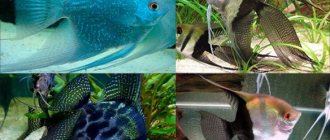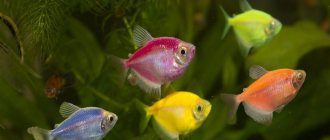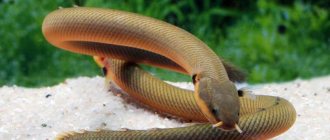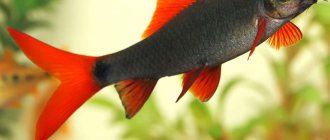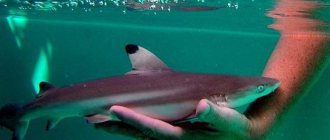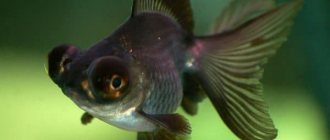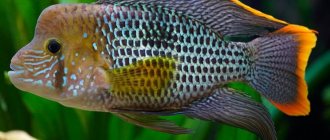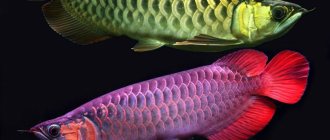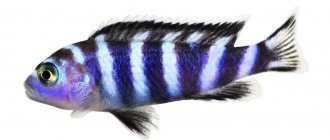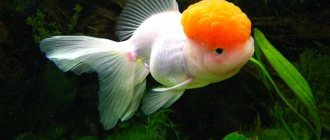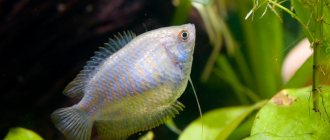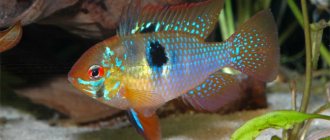Range and Habitat
This genus is widespread in water bodies of South and Southeast Asia, Indonesia and the Philippines.
Representatives of the genus are mainly schooling fish that stay in the upper layers of stagnant and slow-flowing reservoirs.
Aquarium
The minimum aquarium volume is 10 liters for a couple and 100 liters for a group of 10-15 individuals.
Preparing an aquarium for these analyzes does not require much trouble; the soil is preferably fine-grained and dark. In dark colors, it is advisable to maintain the background. Various driftwood, bamboo branches, etc. are appropriate as decorations. It is advisable to fill the peripheral zone with dense thickets of aquatic grasses. The lighting is diffused, moderate; floating plants are used as a light filter.
Water parameters:
Temperature: 23 - 28° C pH: 6.0 - 7.0 Hardness: up to 12° dGH
Effective filtration, regular water changes of the same parameters up to 25% weekly.
Diseases
If the temperature and keeping conditions are observed, the fish rarely get sick. Common diseases include the following:
- Cold – occurs when the temperature in the aquarium drops significantly, and can be expressed as a fungus on the pet’s body. As a treatment, raise the temperature to 29C, and also increase the power of the aerator.
- Oodiniosis is caused by flagellated parasites. For treatment, salt is added to the water, or bicillin-5 is used.
- Changes in water parameters - with sudden changes in acidity and hardness, rasboras experience stress and shock, some pets die.
To avoid the development of parasites and diseases, pets are carefully looked after, monitoring water parameters, cleaning the aquarium and monitoring the quality of food.
Rasboras are aquarium fish whose unpretentiousness and variety of colors are loved by many aquarists. By following simple rules, you can admire the moving miniature pets for a long time, and also get cute and attractive offspring, increasing the number of inhabitants in the reservoir.
Breeding
In nature, many species spawn in large groups.
Representatives of this genus also differ in reproductive biology. Unlike other rasboras, which simply scatter their eggs during spawning, wedge-shaped ones glue their eggs to the lower surface of the leaves of aquatic plants.
Breeding these fish is an extremely difficult process. The fish reach maturity at 7-10 months, depending on the conditions of detention. Around this time they should be planted for spawning. In an optimal pair, the male should be one month older than the female. 10–12 days before spawning, the spawners (no more than 2 males and 3–4 females) need to be seated and fed generously, preferably with bloodworms. At the same time, the fish will get used to the spawning water, which is somewhat different in its parameters from the aquarium water.
The volume of the spawning tank must be at least 30 liters. Broad-leaved plants, such as Thai fern or cryptocoryne, are a must. Plants for the spawning tank must be thoroughly washed, and the aquarium must be disinfected. It is worth putting a net on the bottom to preserve the eggs. The water level of the spawning tank is no more than 20 cm. The water parameters in the spawning aquarium are as follows: hardness - 4, pH 5.5 -6.5, temperature 26 - 28 ° C. Sudden changes are not allowed. The spawning water should be filtered with peat infusion to the color of green tea. Lighting is preferably diffused. However, sometimes it spawns in bright light.
If the conditions created in the spawning area are favorable, the male begins to push the female down, circling above her. The female will soon after this begin to swim above the leaves of the plants, sometimes taking a vertical position upside down. A male will soon join her. It wraps itself around her body, after which the female lays several eggs, which immediately stick to the leaves. Everything is repeated many times. Some of the eggs will still fall to the bottom of the aquarium, under the net. During 1.5–2 hours of spawning, the female can spawn up to 300 eggs.
After spawning, the fish need to be placed back in the aquarium, and the walls of the spawning tank should be darkened. The larvae appear after 36 hours, and the fry are able to swim and feed by the 5th day of life. As a starter feed, you need to use the smallest zooplankton: brine shrimp and daphnia. Since the fry have an excellent appetite, they need to be fed several times a day. Then special dry food can be added to their diet. Grown-up fry can eat granulated food, coretra, enchytraea, small bloodworms, cyclops, daphnia, and brine shrimp. Rasbora fry grow very quickly.
Reproduction
You can breed fish only if you have knowledge about the intricacies and nuances of this process. Pets reach sexual maturity at 10–11 months, and only after this age is it possible to reproduce at home.
Two weeks before spawning, females and males are separated and placed in different containers. The ratio of male to female sex in the spawning tank should be 2:1, and it is advisable to choose males older than females.
Then the spawning tank is prepared. A separate container with a volume of 20–30 liters is filled with peat water (melt or distilled) with suitable indicators; underwater flora with wide leaves, for example, cryptocoryne, is also planted in the nursery. The height of the water level is 20–25 cm, and after dissolving the peat, the water should be greenish or tea-colored.
After a group of fish settles into the aquarium, reproduction occurs in approximately 2–3 days. During this period, pets are not fed to prevent contamination of the aquatic environment. Spawning occurs in dense algae and takes one or two hours. During this time, the female lays about two hundred eggs, after which the parents are returned back to the tank so that the fish do not eat the offspring.
The fry are born after the fifth day, and two days later they are already vigorously swimming in the pond. At this time, aquarists begin to feed the young animals with small food, cyclops, yolk and ciliates. Before moving into a common reservoir, the fry are accustomed to future water parameters, gradually increasing the hardness in the tank.
Rasbora Heteromorpha or Wedge-shaped (Trigonostigma heteromorpha)
A long-time favorite in home aquariums, its history dates back over a hundred years. For most aquarists, the name rasbora is associated with this species, although, as we already know, it is the most atypical representative of this group. This is the largest (up to 5 cm) and tall-bodied of all cuneiform rasboras. The body color is pinkish, a black wedge-shaped spot starting from the middle of the body, wide, evenly tapering towards the tail. In males it is clearly defined, in females it is blurred, with a rounded lower apex. In addition, males are distinguished by a brighter red dorsal fin. The species is widespread in Thailand, Malaysia, Sumatra and Kalimantan.
Rasbora Espei (Trigonostigma espei)
It differs from the previous species in its slightly smaller size, graceful build, copper-red overall color tone, thinner and elongated spot wedge with a concave lower edge, reminiscent of a knife blade (in English this fish is called 'lambchop rasbora'). Peaceful schooling fish for a community aquarium with shady areas. Dense vegetation as shelters: broad-leaved plants and soft, slightly acidic peat water. There are two isolated populations of this species: one in the southwestern part of Thailand, the other in the southeast of the country, on the border with Cambodia. Coloration can vary noticeably depending on the habitat. Length: does not exceed 3.5 cm. Water: temperature 23–28 C; pH slightly acidic below 7; soft, dN 2-10. Food: live, frozen and dry. Area: Thailand, Cambodia.
Types of rasboras
Aquariums contain up to 40 species of such fish, but only a few of them are common.
- Rasbora galaxy.
It is extremely interesting for its bright color, for which many people call this variety: fireworks. Males are especially attractive. Their light inclusions on a black and gray background on the sides are in great harmony with the bright red stripe that stands out on the fins.
In the photo, wedge-spotted rasbora
The females' outfit is somewhat more modest, and their colors look more faded and dull. The fins of females are transparent and stand out at the base only with red markings. The length of rasboras of this species is usually no more than 3 cm.
Such creatures are somewhat similar in habits to guppies, and the rules for keeping these fish are almost similar. Since the rasbora galaxy is small in size, the displacement of the aquarium in which they are placed for permanent residence does not matter much.
But a comfortable temperature in an aquatic environment is very important, and can even exceed that previously indicated by two to three degrees. The described species comes from Myanmar, where such a fish was discovered not so long ago. However, the beauty immediately won the hearts and well-deserved popularity among aquarists.
- Rasbora wedge-spotted or wedge-shaped, also called heteromorpha.
It has a body length of about 4 cm. It is famous for its golden, often silver-tinged color, distinguished by a reddish edging. The fish looks impressive in vessels with a darkened background.
The photo shows the rasbora caudimaculata
The variety is characterized by a conspicuous purple triangular wedge, for which the wedge-shaped rasbora got its nickname. This feature makes it possible to determine the sex of the fish, since in males such a mark is sharp and clear, while in females it has more rounded contours.
Rasbora heteromorph is found in Thailand, Indonesia, Malaysia and the Java Peninsula. As decorative fish, such fish began to actively spread in Russia from the middle of the last century.
A peculiarity of breeding these creatures in an aquarium is the need to settle the water in a container for their placement for four days. The water temperature may be a couple of degrees lower than optimal, but not less than 23°C. To create comfortable conditions close to natural, boiled peat should be placed under the soil.
The photo shows a heteromorph rasbora
A wedge-shaped spot of a dark color with a contrasting edging also distinguishes the Espey rasbora , and the shade of the body itself depends on the area in which the fish live.
For example, specimens from the province of Krabi boast a rich reddish color. Such fish live in Cambodia and Thailand, according to some information, in Laos and off the coast of the Vietnamese island of Phu Quoc.
- Brigitta are rasboras classified as dwarf varieties.
The average body length of such fish is about 2 cm. For such small sizes, these creatures received the nickname: rasbora mosquito. However, the females of this species are much larger and thicker than the males, and their colors are pink and orange.
Male individuals are very small, their body is distinguished by a bright red tint, and along it, to the very tail, there is a dark green stripe ending with a black spot.
Pictured is Rasbor Hengel.
Brigittes are found in southeast Asia, and when bred in aquariums they are unpretentious and non-conflicting, adapting perfectly to any living conditions.
However, they prefer the presence of vegetation floating on the surface. For spawning, thickets of Java moss are useful. The water in the aquarium should be about 27°C, and boiled peat should be added to the soil.
Constant filtration is also necessary, and aquarium water should be changed weekly. Fish live up to four years if decent conditions are provided.
Tiny species (about 2 cm in length) also include strawberry rasbora . These fish got their name because of their bright red color dotted with black dots.
- Rasbora hengel.
A variety with a body length of about 3 cm, also called luminous rasbora for its neon spark-like bright streak on its side. With good lighting, a flock of such creatures looks unusually impressive, like a flickering moving cloud.
In the photo there is a three-line rasbora
The color of the fish can be orange, pink or ivory. In nature, they live among thickets of swamps and quiet ponds in Thailand, Borneo and Sumatra.
Hengeli's Rasbora (Trigonostigma hengeli)
Hengel's Rasbora is very similar to the previous species, and they are often confused, although if you look closely, these fish are very easy to distinguish. The general color tone of this rasbora is more faded, yellowish gray, against which the burning orange spots located in front and above the dark triangle clearly stand out. In general, it is somewhat smaller than Rasbora Espei, the length of adults does not exceed 3.5 cm. The species is widespread on the Sunda Islands - Sumatra and Kalimantan.
Rasbora Somphongsi (Trigonostigma somphongsi)
The smallest representative of the genus, reaching a length of only 3 cm, and at the same time characterized by the least tall, slender body. The spot only slightly widens in the front part and is rather a longitudinal stripe stretching from the base of the tail to the middle part of the body. Its front part is surrounded by a bright yellow edging, while the overall color tone is golden. The species is rare in nature and details of its distribution need to be clarified. It is reliably known to live in some western regions of Thailand.
Cuneiform Rasboras are an excellent choice for general and species aquariums and are widely found among aquarists around the world.
Content
In the process of caring for heteromorphs, it is necessary to take into account the conditions in which these fish live in nature. They like to be in the middle layer of water and hide in dense vegetation. Heteromorphs adapt well to new living conditions.
Aquarium
Rasbor should be kept in flocks of at least 8 individuals. An aquarium with a volume of 40 liters is suitable for this. For a flock of 15 individuals, the aquarium should be larger - about 80 liters.
A heteromorph will feel most comfortable in a rectangular aquarium.
These fish often jump out of the aquarium during active games. That's why it's so important to cover it with a lid.
Water
- Rasboras naturally live in bodies of water with weak currents. This must be taken into account when choosing a filtration system. The water in the reservoirs where these fish live is quite soft. Therefore, it is important to create conditions for the fish that are as close as possible to the natural biotope.
- The water temperature in the aquarium should be between 23 and 25 degrees Celsius. Water hardness should be from 8 to 12 dH, acidity from 6 to 7.0 pH.
Lighting
Rasboras require no more than 8 hours of daylight. At the same time, direct sunlight should not enter the aquarium.
Priming
Sand, small pebbles and gravel are suitable as soil in an aquarium where rasboras live. All this should have a natural coloring.
You should avoid using artificially colored soil as it may contain chemicals that are harmful to your fish.
Plants
Heteromorph Rasboras definitely need shelter in the aquarium. To do this, you need to plant the following plants in the aquarium:
cryptocoryne
hornwort moss (any species)
Vallisneria
You can lay various driftwood on the bottom. There should be floating plants on the surface of the water in an aquarium with rasboras. However, there must be enough free space in the container for floating.
Feeding
Rasboras heteromorphs are unpretentious eaters. In nature, they prefer to eat insects. Aquarium rasboras can be given any type of food: medium-sized granules, dry food, live food, flakes. They love rasboras and frozen food, such as brine shrimp.
The rasbora's mouth is small. That is why the food should be small so that the fish can easily swallow it.
